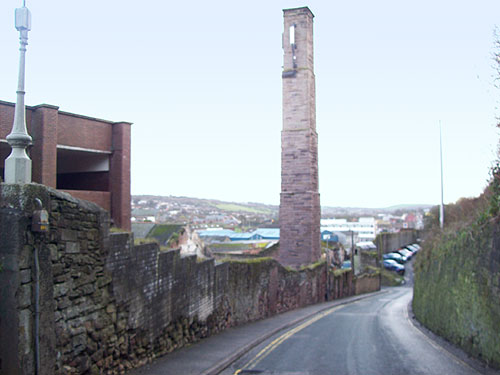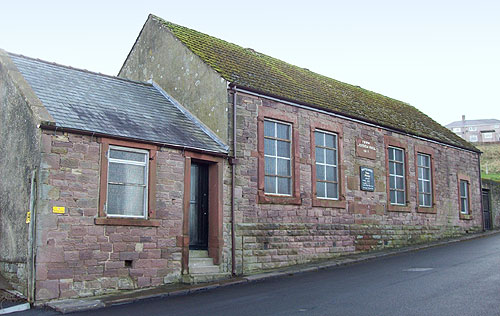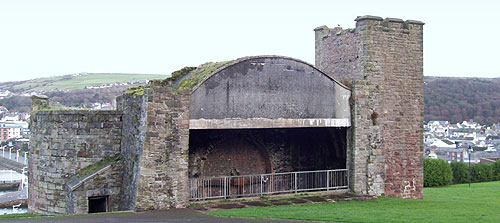

Rosemary Lane is now just a narrow winding road from the top of Albion Street up onto Kells but in the 19th century it connected two centres of industrial population, Mount Pleasant and Newhouses. The origin of the name is uncertain often being said to come simply from the fragrant herb Rosemary growing in the Wyberg gardens when Mount Pleasant lived up to its name. A more interesting derivation is that it came from rosary or a contraction of Rosary of Mary from long before Whitehaven developed as an independent town when the Monks from St. Bees had accommodation on what became Albion Street. The idea of the Carthusian brothers wandering in contemplation around the gardens and chanting prayers evokes images of Whitehaven before industrialisation.
The photo is taken from the top of the steps which were originally at the top of Ribton Lane and can still be accessed via Harmless Hill which runs up the side of the multi-storey car park and takes its name from the open ground there that had once been gardens.
The chimney which now acts as a mast for mobile phone communications was once part the Phoenix foundry which lay between Albion Street and Ribton Lane. All along the wall can be seen old doorways and windows.

At the top of the first bend is the Old Mission hall bearing the date 1863 and beyond that, what was Crossthwaite School has now been converted into a house.

On the other side of the road is the Duke Pit fan house. These preserved ruins in a castellated style once housed a 36 foot diameter Guibal fan which was used to ventilate the mines of first Duke Pit, which was sited near the Beacon, and later Wellington pit on the south shore. Duke Pit was initially sunk by Carlisle Spedding in 1747 but the Guibal fan was installed about 1860 to replace the practice of lighting a fire at the bottom of the shaft to create an updraft. The rectangular viewing gallery with a concrete arched roof was added in the 1970's after demolition was halted and preservation became the preferred option.
Rosemary Lane continues up the hill until the junction with High road and and Harbour View.
© WAWL 2009